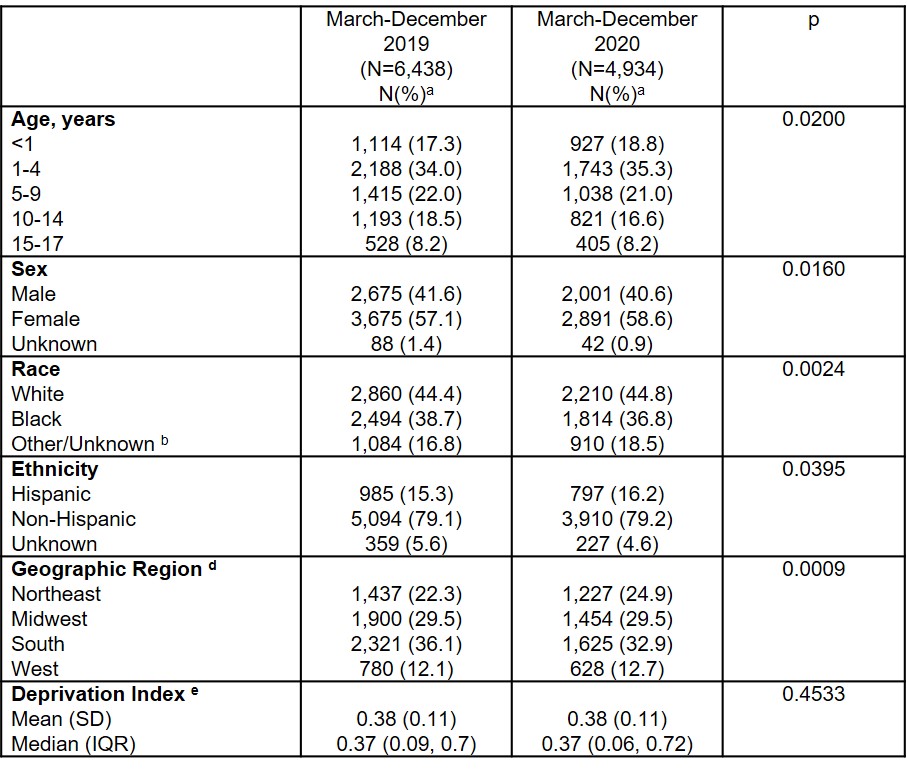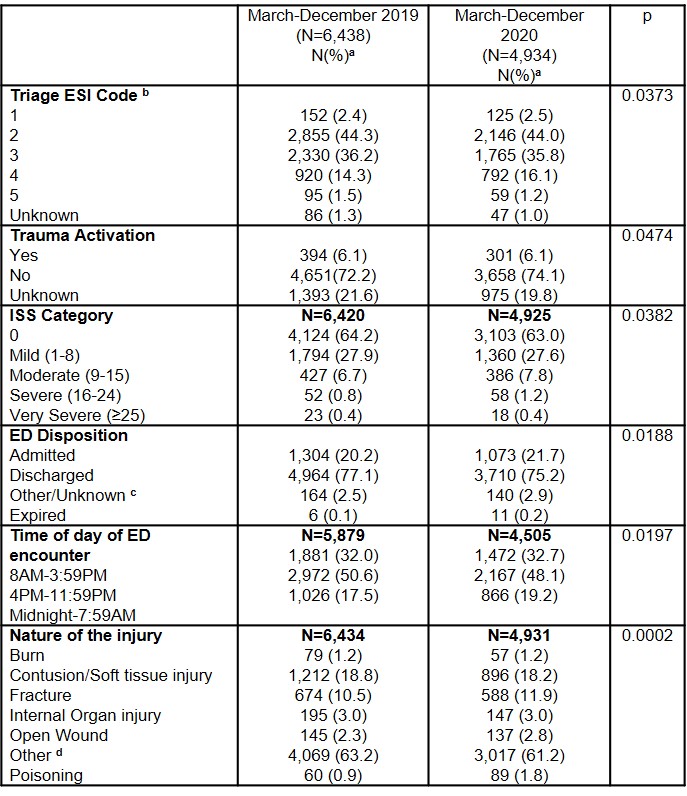Child Abuse & Neglect
Child Abuse & Neglect 2
610 - The Impact of COVID-19 on Child Abuse Cases Presenting to Pediatric Emergency Departments (EDs)
Friday, April 28, 2023
5:15 PM - 7:15 PM ET
Poster Number: 610
Publication Number: 610.104
Publication Number: 610.104
Stephanie Ruest, Hasbro Children's Hospital at Rhode Island Hospital, Foxboro, MA, United States; Tanya Charyk Stewart, London Health Sciences Centre & Western University, London, ON, Canada; Lindsay Clukies, Washington University in St. Louis School of Medicine, Frontenac, MO, United States; Caitlin Farrell, Boston Children's Hospital, Natick, MA, United States; Holly R. Hanson, Monroe Carell Jr. Children's Hospital at Vanderbilt, Nashville, TN, United States; Danielle Laraque-Arena, NYAM and Columbia University, New York, NY, United States; Karla A. Lawson, Dell Children's Medical Center of Central Texas, Austin, TX, United States; Wendy J. MD, Cincinnati Children's Hospital, Cincinnati, OH, United States
.jpg)
Stephanie Ruest, MD, MPH, FAAP (she/her/hers)
Assistant Professor of Pediatrics and Emergency Medicine
Hasbro Children's Hospital at Rhode Island Hospital
Foxboro, Massachusetts, United States
Presenting Author(s)
Background: Child abuse (CA) and neglect represent a serious pediatric public health crisis, affecting nearly 1 in 7 children. Lockdowns and school/daycare closures due to COVID-19 influenced the daily lives of families in many ways. Literature published to date about the prevalence of child abuse during the pandemic has been contradictory.
Objective: To describe CA prevalence, injury types, and severity among patients treated at 40 pediatric EDs prior to and during the COVID-19 pandemic.
Design/Methods: This is a sub-analysis of data from a cross-sectional study of all injury-related visits to 40 pediatric EDs for children < 18 years old occurring January 2019-December 2020. Children with ED visits for CA were identified by ICD10 codes (bodily injury codes: S00-S99, T07-T78 and/or CA codes: T74, T76) and analyzed. Frequencies were calculated and patient demographics, abuse prevalence, severity, and mechanisms of injury for 3/17/2019-12/31/2019 vs. 3/15/2020-12/31/2020 (study period) were compared using the Chi-square statistic.
Results: Visits with a CA diagnosis comprised 2% of all injury-related visits during the study period, with a proportional increase from 1.89% of all ED visits in 2019 to 1.99% in 2020. There were 1,504 fewer visits (-23.4%) in 2020 (N=4,934) than in the same time period in 2019 (N=6,438). There were significant differences in the proportion of abuse-related visits by age (p=0.0200), with a relative increase in visits among children < 5 and a decrease among school-aged children (Table 1). There was also a significant shift in the prevalence of CA between geographic regions (p=0.0009), with a notable increase in the Northeast United States and decrease in the South. In 2020, there was a significant increase in the proportion of trauma activations (p=0.0474) and higher injury severity scores (p=0.0382) (Table 2) as compared to 2019, as well as shifts in the injury type (p=0.0002), with an increase in the proportion of fractures and poisonings in 2020. Finally, there was a change in the distribution of ED disposition (p=0.0188), with higher percentages of admissions and deaths.
Conclusion(s): There was an overall increase in the proportion of abuse-related ED visits during the COVID-19 pandemic, despite fewer total injury visits in 2020, with an increase in injury severity, admissions and deaths, as well as shifts in prevalence by geographic region and injury patterns. These findings support the need for additional studies to further elucidate these patterns seen at the national level, and can help guide prevention efforts in the event of future pandemics and public health emergencies.


